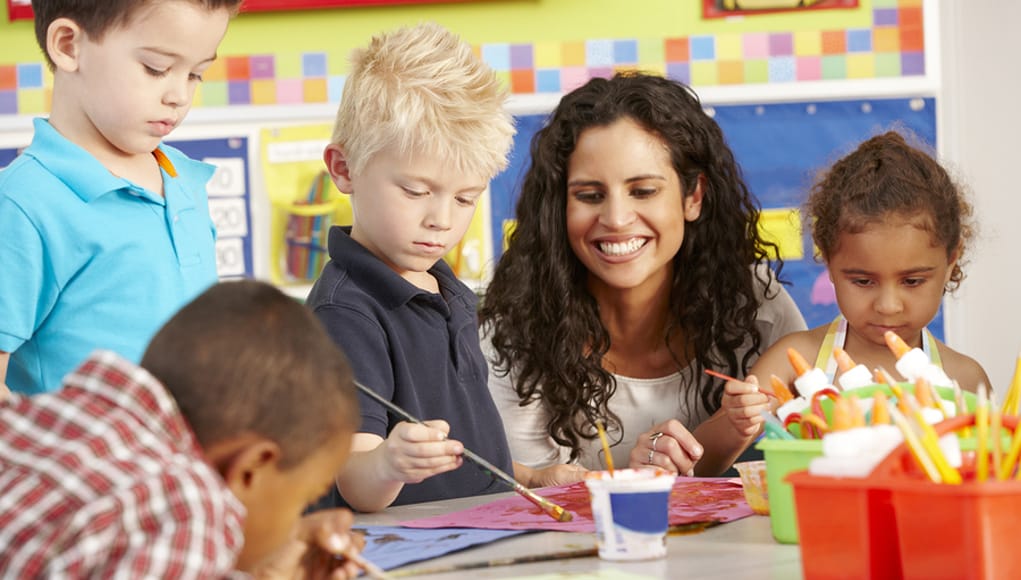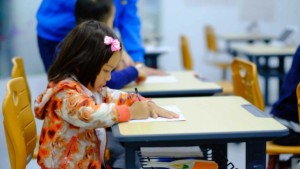5 Ways for Teachers to Nurture the Creative Genius in Their Students

Is genius born, or is it made?
A recent fascinating study addressed this timeless question and reveals that people are born creative. NASA scientists designed specialized tests to assess ability to come up with new and original ideas. Of the 1,600 4-5 year olds that took the test, 98% of them scored at “genius” levels on imagination.

Over time, the same students were re-tested, and they scored worse and worse. Only 2% of adults (average age of 31) scored in the “genius” category, suggesting creativity atrophies as we get older.
It’s not imperative that every person be “creative,” but life in the 21s century increasingly requires us to exercise more creativity, teachers and students alike. Without this skill, teachers risk losing jobs to AI, and students risk falling short on their true potential.
So Why Does Creativity Decline Over Time?
Some attribute it to the education system, arguing that as we grow through our formative years, parents and teachers encourage students to take the safe and secure route in school, work and life. In other words, our K-12 and college experiences aren’t necessarily designed to nurture our “creative genius.”
While it’s certainly not fair to pin it all on the education system (seeing as a diminishing imagination probably makes some sense as children are exposed to more and more of the real world), there are a few things teachers can do to combat the diminishing sense of imagination among young students.
How To Nurture Creative Mindsets in Your Classroom
Fostering “genius” creative abilities is not about inflating your students’ egos into thinking they are more gifted or better than others. Instead, here are five ways you can help students maintain (and increase) their natural creativity.
1. Foster a Question-Friendly Environment
Help students develop the habit of asking “why” questions about information, ideas, and beliefs normally taken for granted.
This classroom scenario is all too common: a student keeps asking questions, the teacher and classmates get annoyed, the student gets cut off. Instead of dissuading him or her to stop questioning, reward the questioning and promote an environment of openness so more students feel less afraid to speak up.
Encouraging this type of behavior might require more teaching time, but it will nurture a childlike sense of wonder as your students learn and grow.
2. Practice Generating More Ideas
Allocate fixed time towards creativity for students with Genius Hours, like Google does for their employees. Creativity is a muscle that grows stronger and more efficient the more we exercise generating ideas.
The more ideas we come up with, the more original the ideas generated will be. The more ideas we come up with, the greater our chances of producing a work of success.
Passive creativity isn’t the only source of “eureka moments.” Actively generating ideas helps you produce better ideas that you’re more likely to act on. Genius is one percent inspiration and 99% perspiration, said Thomas Edison.
For example, Picasso’s masterpieces didn’t just come instantly. His inventory of ideas included over 1,800 paintings, 1,200 sculptures, 2,800 ceramics, 12,000 drawings, plus prints, rugs and tapestries. Yet, only a handful of these spread virally.
When it comes to ideas, quantity improves quality.
3. Encourage New Skills
It’s great for students to major in a singular field, whether it’s science, math or art. To foster new ideas and a unique perspective, however, encourage them to learn a variety of skills and subjects. The more unrelated the field, the better.
For example, the scientists of the future would be wise to take coding lessons, guitar lessons, tennis lessons and painting lessons. Learning different methods and practicing new skills not only engages different parts of the brain, but it inspires cross-pollination of ideas from one domain to the other.
4. Model Creativity in the Classroom
In one of the most popular Ted Talks of all time, “How Great Leaders Inspire Action,” Simon Sinek constantly repeats the key takeaway – “people don’t buy what you do, they buy why you do it.”
To help students unleash more creativity, lead by example, and openly share your original ideas with the class. Model what it looks like to be open to feedback and bounce ideas off of one another.
Great ideas don’t always make sense to everyone at first. Even The Lion King went through multiple iterations with Disney’s producers until the writers eventually reframed it as the story of Hamlet but with lions.
5. Use the Jigsaw Classroom Method
When assigning classroom activities, allow students to do some work on their own. Doing individual work not only prevents groupthink, but it also facilitates student participation and helps them value their peers’ strengths more.
For example, you could facilitate a group project on Europe, where each student has to research and share interesting facts and stories about different countries. Learn more about the Jigsaw Classroom method here.
Final Words
To learn more about promoting original, creative thinking in others, check out the following resources.
- Originals: How Nonconformists Move the World, by Adam Grant
- The Power of Habit: Why We Do What We Do in Life and Business, by Charles Duhigg
- The War of Art: Winning the Inner Creative Battle, by Steven Pressfield
As role models of people’s most formative years, teachers have a strong influence in encouraging or suppressing creativity. This responsibility doesn’t solely fall on the education system, but it’s worth remembering that almost 100% of students show strong creative abilities before becoming students.
As Sir Ken Robinson said, “creativity is now as important to education as literacy.”
For more, see:
- How Project-Based Learning Unleashes Students’ Creativity
- 3 Necessary Skills for Educators in the Era of AI
- At the Intersection of Creativity and Critical Thinking
Raj Shah is a senior manager at TakeLessons. Find him on the TakeLessons blog, or on Twitter @rajshahchicago.
Stay in-the-know with all things EdTech and innovations in learning by signing up to receive the weekly Smart Update.







Thom Markham
All of these are fine techniques or strategies. But the core issue is 'openness to experience'. Young children score high because they do not filter the world through preconceived notions. As educators, we should always be seeking and honoring divergent views and thinking that takes young people outside the lines of conventional thinking -- the exact opposite, of course, of a standards based approach. That is also why, in the coming age of AI and the need for deeper levels of creative imagination, the standards-based movement is doomed.
Nathalie Argueles
Whoa! This is impressive. I leaned back in my chair a bit and was just sitting here pondering everything you said. Really cool.